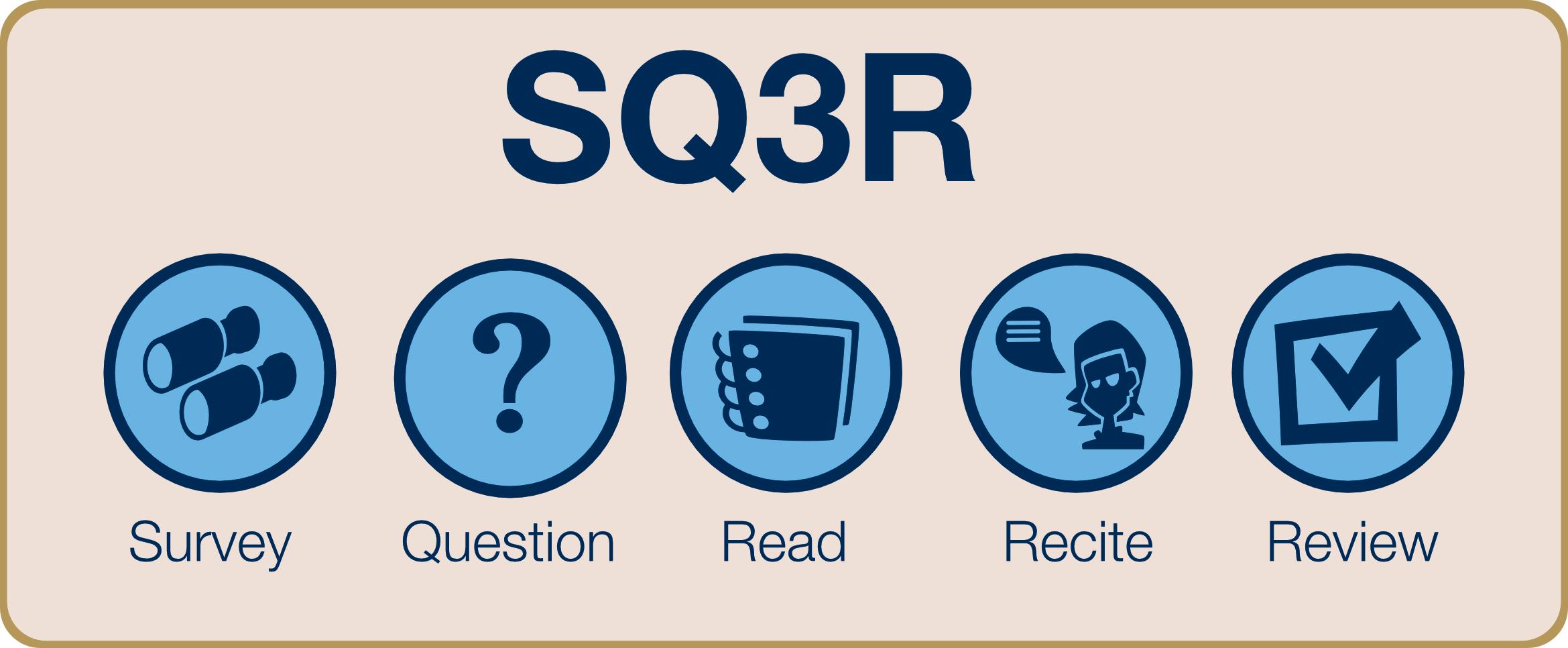University study requires a lot of reading of sometimes unfamiliar and challenging material. Fortunately, there are lots of strategies you can use to maximise your reading time and get the information to "stick". Information on this page introduces a variety of approaches you can use for reading fiction, journal articles, and textbooks.


The SQ3R strategy (adapted from Robinson, 1978) shows you how to be an effective "active reader".
Survey
Before you read, survey the text: the title, headings, sub-headings, the introduction, conclusion, summary; captions, charts, graphs, maps.
Question
Turn the headings, sub-headings into questions you think the section should answer.
Read
Read the sections with your questions in mind. Look for answers. Make up new questions if necessary.
Recite/Recall
After each section, stop and think back to your questions.
Review
Once you have finished the whole chapter/article, go back over all the questions formed from all the headings. Can you still answer them? If not, go back and refresh your memory.
Skimming can be an effective way to review a text or get an overview. It involves moving your eyes rapidly over a text and picking up on typographical cues such as indents, bolded text, quotes, and headings. You will not get the complete picture when using this method, however it is a good way to determine whether a text warrants further reading or not. Here are the main aspects of the skimming process:
(Butte College, n.d., para. 7)
Scanning is an effective way of identifying particular points or facts within a text. Scanning should ideally be done after skimming the text for an overview, so you can understand the overall context of the document. The process involves rapid eye movement over a text, looking for cues such as keywords and headings, so you can focus on a particular point. Don't forget to look at tables of contents and indexes during this process. Some points to remember when scanning:
(Butte College, n.d., para. 12)
Butte College, (n.d.). Tip sheet: Skimming and scanning. http://www.butte.edu/departments/cas/tipsheets/readingstrategies/skimming_scanning.html
Robinson, F. P. (1978). Effective study (6th ed.). Harper & Row.
Copyright © 2025 The University of Notre Dame Australia | CRICOS Provider Code: 01032F | TEQSA PRV12170 | RTO Code 0064

